Birding shore to shore
By JOHN PEPIN
Deputy public information officer
Michigan Department of Natural Resources
A recent cooperative venture has resulted in an exciting new opportunity for birdwatchers in the eastern Upper Peninsula.
With the help of several partners, the Michigan Department of Natural Resources has developed the Shore-to-Shore Birding Trail, which is a driving/walking/birding experience that covers more than 400 miles and 40 birding points of interest throughout parts of Chippewa, Schoolcraft, Luce and Mackinac counties.
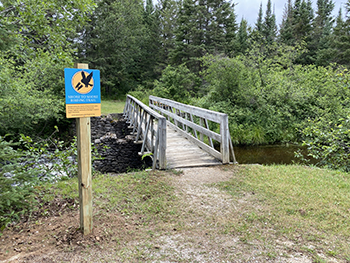
?It is no secret that Michigan is home to many natural wonders and diverse bird species, making it a location that birdwatchers, also known as birders, flock to,? said Jayne Roohr, a DNR wildlife technician at Newberry. ?Across the state, various groups are working to establish birding trails in many communities.
?These trails are self-guided driving routes that direct visitors to designated locations that offer unique and exciting bird-viewing opportunities and may also highlight natural and cultural features of the local communities that the trails go through.?
The Shore-to-Shore Birding Trail is situated within the shorelines of Lake Superior, Lake Michigan and Lake Huron and passes through several communities, including St. Ignace, Sault Ste. Marie, Bay Mills, Newberry, Seney, Engadine, Naubinway, Trout Lake, Brevort and Epoufette.
?Whether you visit the Shore-to-Shore Birding Trail to cross off another life bird from your list or come to enjoy the unique species found in Michigan?s Upper Peninsula, there is no doubt that you will experience the awe-inspiring wonder of the region and enjoy local hospitality and culture,? a passage from the website promoting the trail reads.
Some of the birding highlights of the area include opportunities to see up to 10 species of owls, three species of grouse, numerous warblers and other sought-after perching bird species, endangered piping plovers and Kirtland?s warblers, which are more typically associated with the northern Lower Peninsula.
|
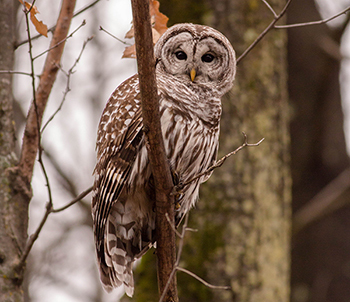
More specifically, the trail traverses Lake Superior?s southern shore from Sault Ste. Marie to Whitefish Point, which is Michigan?s premier birding destination. Migrant waterbirds, songbirds, shorebirds and raptors pass by the point in tremendous numbers during spring and fall migration, and rarities often show up. From there, the trail heads south and east through forests, bogs and patches of grassland.
Interior stops include a multitude of forested and nonforested habitats in the Hiawatha National Forest, the Seney National Wildlife Refuge, the Silver Creek Birding Trail and a variety of other favored birding locations.
The trail is flanked by the northern shore of Lake Michigan from Naubinway Harbor to Point la Barbe near St. Ignace.?A diverse array of migrant songbirds calls this area home in the summer, and both resident and irruptive (winter migratory) boreal species can be found here in winter.
The website for the trail offers a range of helpful resources including an interactive map, with detailed information on numerous locations, birding tips, links to important birding aids, like a checklist of U.P. bird species, and information helpful in connecting with various travel and tourism entities.
|
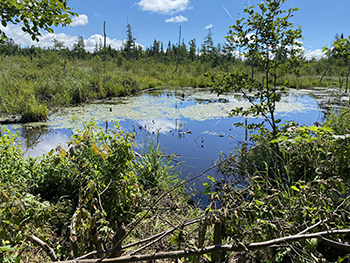
Developing the trail was a determined and cooperative effort that took place over the past five years. The initial impetus for the trail was continuing efforts to coordinate promotion of birding hotspots in this part of Michigan.
Partners with the DNR on the trail included the Chippewa-Luce-Mackinac Conservation District, the Hiawatha National Forest, Seney National Wildlife Refuge, Bay Mills Indian Community, Sault Ste. Marie Tribe of Chippewa Indians, Michigan Sea Grant and the Eastern Upper Peninsula Regional Planning and Development Commission.
Additional organizations and individuals, including local birding experts, photographers, land managers and other volunteers also contributed to the efforts to plan and create the trail. The trail?s website details some of the backstory:
?Initial planning efforts began in 2017 when local DNR Wildlife Division staff attended the Michigan Birding Trail Network Workshop in Traverse City, hosted by the Michigan Audubon Society in partnership with Michigan Sea Grant and Michigan State University Extension.
?Brainstorming continued at a local level until early 2019 when trail planning efforts picked up with multiple partners joining in on the effort of identifying locations, suitable habitats, writing interpretive information, designing signs, maps, and brochures and gathering resources for each stop along the trail.?
Working on the project allowed the DNR to become involved in a meaningful endeavor that broadens the agency?s reach and relevancy with a segment of wildlife recreationists the department doesn?t always get to work with directly.
|
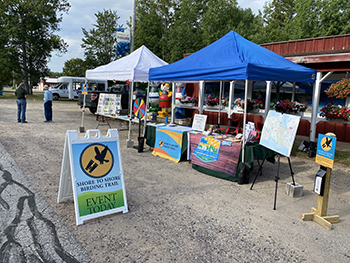
A grand opening event for the trail was held Aug. 19-20 in Paradise, during the village?s popular Paradise Wild Blueberry Festival.
DNR and conservation district staffers hosted an information booth during the grand opening, while volunteers from the Seney National Wildlife Refuge provided free guided birding tours at Whitefish Point, which is located not far away. Over 250 people visited the booth to learn more about the trail.
Funding for developing the trail was provided by the DNR and a Hiawatha National Forest Secure Rural Area Schools Self-Determination Act of 2000 grant secured by the conservation district from the U.S. Department of Agriculture?s Forest Service.
?This funding supports a full-feature website, printed trail map, educational panels along the trail, roadside signage and the kickoff event to celebrate the grand opening,? said Mike McCarthy, executive director of the Chippewa-Luce-Mackinac Conservation District.
|
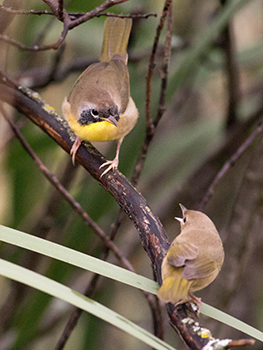
?Michigan?s eastern Upper Peninsula now boasts three large birding trails, with the newest addition of the Shore-to-Shore Birding Trail,? McCarthy said. ?The Shore-to-Shore trail is bordered on the west side by the Superior Birding Trail and the North Huron Birding Trail to the east.?
Development of the Shore-to-Shore Birding Trail will provide valuable, new opportunities to local birdwatchers, as well as those traveling to the area from outside the region to experience the beautiful forests and wetlands, winding rivers, countless lakes and the wondrous variety of avian species that frequent the eastern U.P. during all or part of the year.
For more information on the trail, visit shoretoshorebirdingtrail.org. ?
|
Check out previous Showcasing the DNR stories in our archive at Michigan.gov/DNRStories.?To subscribe to upcoming Showcasing articles, sign up for free email delivery at Michigan.gov/DNR.
Note to editors:?Contact:?John Pepin, Showcasing the DNR series editor, 906-226-1352. Accompanying photos and a text-only version of this story are available below for download. Caption information follows. Credit Michigan Department of Natural Resources, unless otherwise noted.
Text-only version of this story.
Barred owl: Barred owls are one of 10 species of owls birdwatchers might see along the Shore-to-Shore Birding Trail in the eastern Upper Peninsula. (Photo courtesy of Evan Griffis)
Birders: Birdwatchers enjoy a beautiful day in the eastern Upper Peninsula. (Photo courtesy of Evan Griffis)
Common yellowthroat: Two common yellowthroats are pictured. The birds are among the warbler species birders can find in the eastern Upper Peninsula. (Photo courtesy of Evan Griffis)
Event: The event booth set up and ready to go for the Shore-to-Shore Birding Trail open house event in Paradise.
Spruce grouse: Spruce grouse, along with ruffed and sharp-tailed, are three grouse species birders might find in a single day along the Shore-to-Shore Birding Trail, which runs through parts of Chippewa, Mackinac, Luce and Schoolcraft counties. (Photo courtesy of Evan Griffis)
Trail: A Shore-to-Shore Birding Trail sign is shown posted at the old Eckerman Trout Pond in the eastern Upper Peninsula. (Photo courtesy of Evan Griffis)
Wetland: This image is a view overlooking a wetland on the Bailey-Lagerstrom Nature Preserve, located on Sugar Island in the eastern Upper Peninsula. (Photo courtesy of Evan Griffis)
|